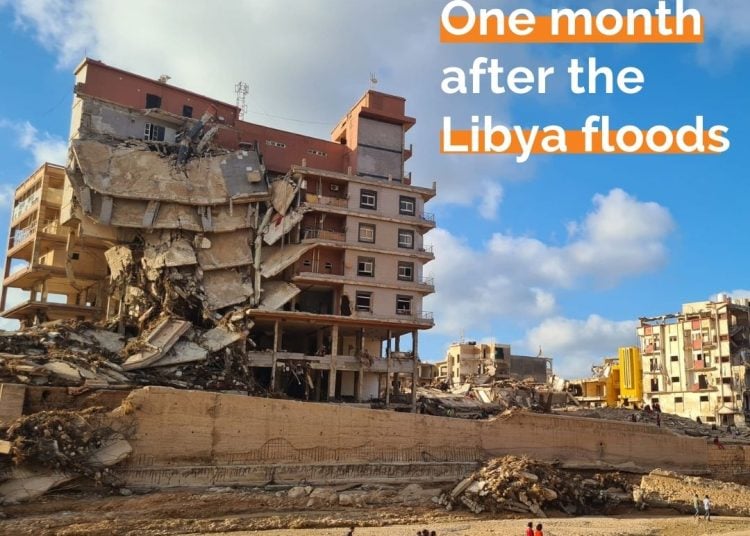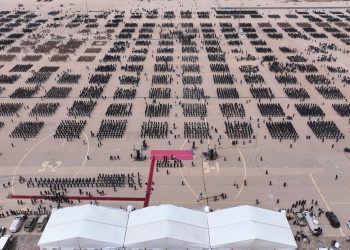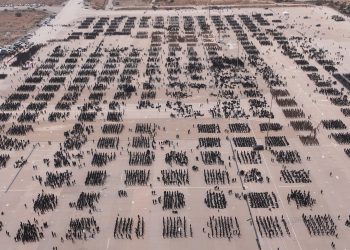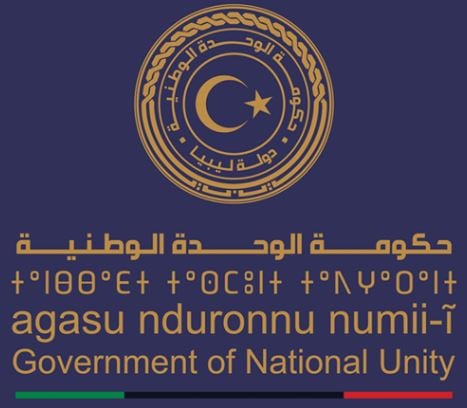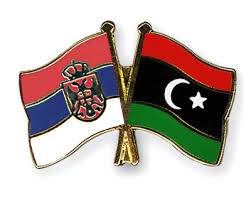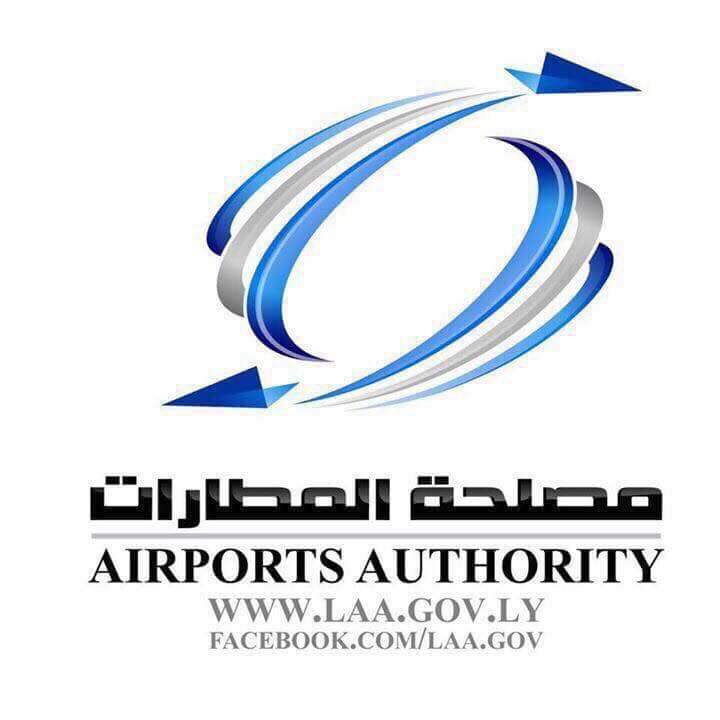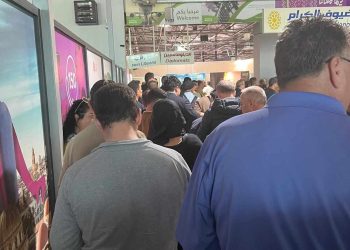One month after Storm Daniel hit the Libyan eastern coast causing a major disaster in the city of Derna, the latest UN Office for the Coordination of Humanitarian Affairs for Libya (OCHA) report says the humanitarian response continues alongside early recovery and reconstruction efforts. It says assistance is ongoing in the affected areas, with some delays in assessments and data collection caused by a communication outage in Benghazi.
The OCHA report says the latest figures indicate that there have been 4,300 deaths, 8,500 are still missing, 250,000 people are in need, 146,00 people have been reached, 42,000 are internally displaced and there have been 1,200 cases of watery diarrhoea.
Schools
The report says that after the school year started with a delay in the east last week, the report says Derna schools reopened for recreational activities and psychosocial support on 8 October.
About 98 schools remain closed due to damage or other flood-related access issues in the affected areas, five of them in Derna. Eleven schools continue to host displaced people.
Food and banking
Food prices stabilized on an increased level with some exceptions. Banking services have been restored, with limitations on withdrawal amounts and access to digital banking.
The UN Disaster Assessment and Coordination (UNDAC) team that arrived in Libya on 13 September ended its mission on 7 October, after supporting the establishment of coordination structures and completing a multi-thematic needs assessment.
SITUATION OVERVIEW
IOM and partners assessed 38 collective centres for internally displaced persons (IDPs) and found that 14 are currently occupied by about 1,800 people. This is a significant decrease from the initial count of about 3,300 people hosted in 37 sites. An ongoing communication outage and security concerns in and around Benghazi delayed further data collection in Benghazi.
A total of 34 schools in affected areas were repurposed to host IDPs in the first days after the floods. As of 10 October, 11 remain collective IDP centres; 23 have been vacated and reopened for education. In Benghazi, collective centres hosting families from Derna were reportedly closed. There are unconfirmed reports that families have been offered a rental subsidy. IDPs originally from Tawergha and secondarily displaced after the floods still live in school buildings and have not been offered rental assistance. IDPs in Albayda schools were moved to two hotels. In Derna, most IDPs in schools have reportedly been registered and promised cash-for-rent assistance. One school in Derna still hosts IDPs.
The local Derna Relief Committee has to date registered 4,000 displaced households and estimates there are in total 5,000 displaced households (about 25,000 individuals) in Derna, compared to 16,000 IDPs in Derna recorded by IOM-DTM.
Derna schools reopened on 8 October with a two-week mental health and psychosocial support (MHPSS) and recreational programme. Resumption of formal education is planned for 28 October. Five damaged schools in Derna remain closed.
UNHCR and partners are advocating for equal access to assistance for all affected people, including IDPs who were secondarily displaced, non-Libyans and other vulnerable groups. Displacement, death of family members, the destruction of houses, the loss of livelihood and trauma have resulted in new vulnerabilities, particularly for unaccompanied and separated children (UASC) and newly widowed women and their families.
Reliable data on these affected groups is not available yet due to lack of registration and death certificates, as well as the high number (8,500) of people still missing.
UNICEF and child protection partners are working with local authorities on rapid registration of children who have been separated from both parents. Key messages have been distributed to partners, authorities and communities and a child protection case management system is being put in place for family tracing, reunification and alternative care options.
UASC are particularly vulnerable to discrimination, exploitation, abuse, denial of access to basic services, trauma and the lack of identification papers.
UNFPA estimates that up to 24,000 of the women and girls who need humanitarian assistance are pregnant and lacking essential sexual and reproductive health services. About one in ten of that number are expected to give birth in the next month.
WHO is leading efforts to establish standards and a coordination mechanism to address affected people’s high demand for mental health and psychosocial support (MHPSS).
According to WFP, banking services are accessible again for people in the affected areas, but the maximum cash withdrawal is limited to an average amount of 3,000 LYD (approximately US$610) per month. UN advocacy efforts are ongoing to request the registration of customers for digital methods of payments to ease transfers to and within Libya, increase the withdrawal ceiling for humanitarian agencies and ensure cash supply to flood-affected areas.
WFP and IOM assessed market functionality in affected areas. Prices have mostly stabilized on an increased level, except for eggs. About 50 per cent of households continue to report issues with accessibility, affordability and availability of essential goods. Disruption in local markets and economic activities was reported by 8 per cent of households.
Further market functionality analysis is underway, including a cash partner and REACH Initiative Joint Rapid Market Assessment (JRMA) to gain insights into the availability of non-food and minimum expenditure food items. Further related assessments are planned by FAO and UNDP, with focus on early recovery and the agricultural sector.
The UNDAC team left Libya on 7 October. During its three-week deployment, UNDAC, including OCHA staff and operational partners from REACH, iMMAP, MapAction, Atlas Logistics, Télécoms Sans Frontières, and the EU supported humanitarian coordination, needs assessments and information management.
UNDP conducted an analysis of satellite imagery and data for seven severely affected areas, including Derna, Benghazi, Almarj, Albayda, Shahhat, Sousa and Altamimi to evaluate damage to critical infrastructure and debris generation. UNDP’s collaboration with the United Nations Satellite Centre (UNOSAT) was valuable due to limited access in these areas. UNDP experts joined to support the debris removal, disposal and development of related guidelines.
Russian rescuers end mission in Libya: Russian Foreign Ministry (libyaherald.com)
Switzerland offers extra CHF 1 million for Libyan flood effort (libyaherald.com)
Jordan sends third humanitarian relief plane to aid in Libya Storm Daniel disaster (libyaherald.com)
Public Service Company clears Wadi Mejeneen valley, Ministry inspects valley (libyaherald.com)
UN’s Derna overview: Officially, only 3,958 confirmed dead and 40,000 displaced (libyaherald.com)
EU Copernicus satellite images of Flood Daniel hit Libya released (libyaherald.com)
Conflicting news over ending of Search and Rescue for survivors in Derna (libyaherald.com)
UNSG Guterres calls for opening of investigations into collapse of Derna dams (libyaherald.com)
Derna update: International aid continues to arrive, infrastructure damage update (libyaherald.com)
Latest UN satellite imagery shows extent of Storm Daniel destruction in Derna (libyaherald.com)
More than 5,300 dead and 10,000 missing in Derna disaster (libyaherald.com)
More than 2,000 dead and thousands missing after Storm Daniel hit eastern Libya (libyaherald.com)
Libya hit by storm Daniel with eastern region suffering worse damage (libyaherald.com)


